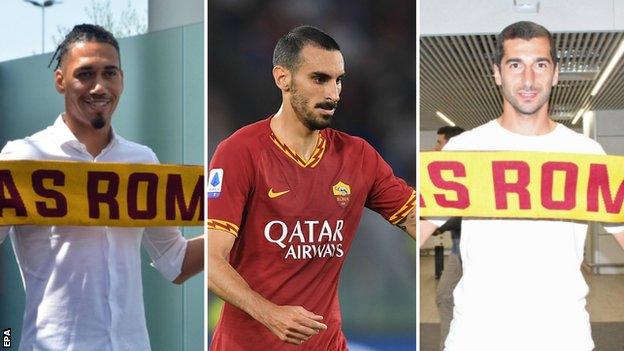Fifth missing child found via Roma social media campaign
- Published

Missing children were all highlighted when Chris Smalling Henrikh Mkhitaryan and Davide Zappacosta joined Roma
Roma's missing children social media campaign has helped find a second girl from London.
It means the Italian club has helped find five children since partnering with UK charity Missing People in July.
The charity has provided Roma with 20 different cases to feature in the campaign, which has been promoted when announcing transfer signings.
Two Kenyan children were found when Roma signed Henrikh Mkhitaryan and Chris Smalling.
Previously, a girl from London and a boy from Belgium were found after the arrivals of Mert Cetin and Davide Zappacosta.
Missing People chief executive Jo Youle said it was "fantastic news".
"We are really thankful to our friends at AS Roma for sharing their transfer videos featuring the missing children on social media," she added.
"With the help of their millions of fans, it has raised awareness of missing children and young people to a wide audience."
The 16-year-old from London, who can no longer be identified for legal reasons, went missing on 12 July and appeared in more Roma announcement videos than any other child this summer.
After first being featured in the video to announce the Zappacosta signing, the teenager was then included again by Roma in the announcement videos for the arrivals of Smalling, from Manchester United, and Mkhitaryan, from Arsenal, to increase awareness of her disappearance in England.
After the close of the transfer window, a new video highlighting all of the English missing children featured in the campaign was published - with the 16-year-old shown first.
The campaign was inspired by rock band Soul Asylum's video for their 1992 song Runaway Train, which highlighted the faces and names of missing children, and similar to those printed on millions of milk cartons in the USA during the 1980s and '90s.